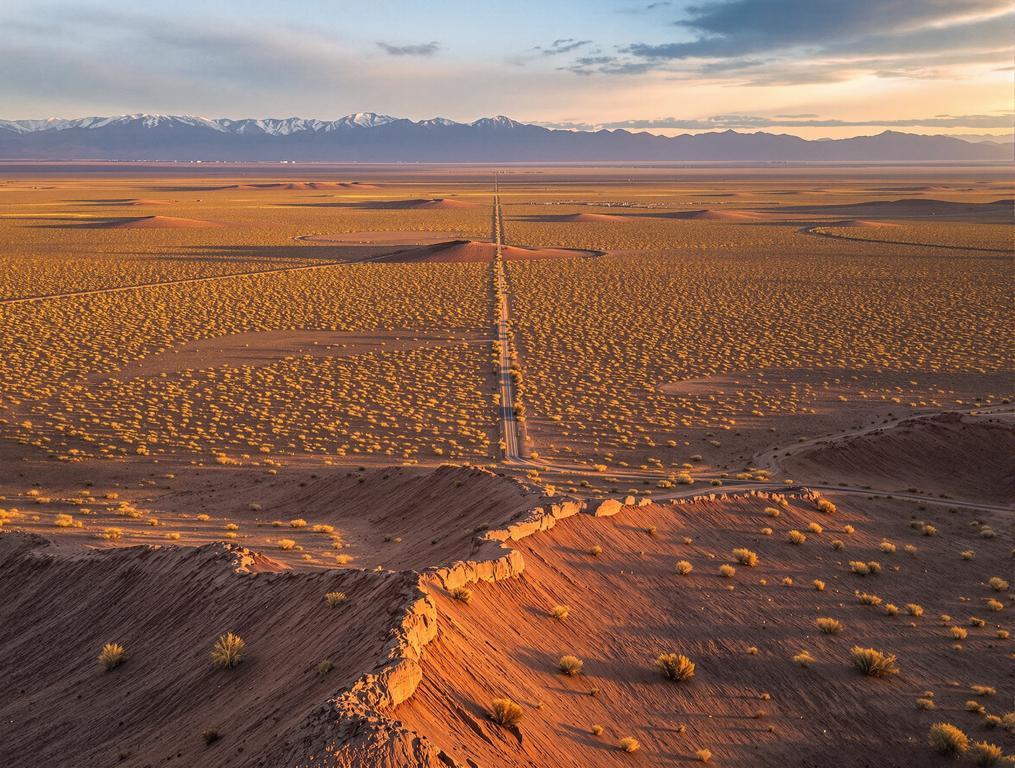The dust kicks up behind my truck as I pull into Lovelock, Nevada, the only incorporated city in the vast 6,067 square miles of Pershing County. That’s a territory larger than Rhode Island containing just 1,799 residents and exactly one stoplight. My GPS shows the nearest city with over 20,000 people sits 95 miles away in Reno. This isn’t just rural America – it’s a statistical anomaly of isolation that makes even Montana’s remote towns seem metropolitan by comparison.
Standing on Main Street at 3,980 feet elevation, I watch two locals chat unhurriedly outside the historic courthouse. No one’s rushing here. Unlike the Instagram-ready desert destinations I’ve covered recently, Lovelock exists primarily for itself, not for visitors – and that’s precisely its charm.
A County Larger Than Rhode Island With Just One City
Pershing County spans 6,067 square miles of high desert terrain, yet Lovelock remains its sole incorporated city. Not a single other town in this massive expanse has enough population or infrastructure to qualify for city status.
This creates a uniquely preserved slice of Western Americana. While Arizona’s art gallery hotspots have been transformed by tourism dollars, Lovelock maintains its authenticity through simple mathematics – 0.29 residents per square mile simply can’t support tourist traps.
The town serves as both government seat and agricultural hub. Driving the 40-mile Lovelock Cave Backcountry Byway, I pass alfalfa fields irrigated by century-old water rights. These aren’t decorative farms for city folks’ photos – they’re working operations that rank among Nevada’s top hay producers.
“People drive through thinking there’s nothing here. That’s fine with us. The ones who stop discover we have 4,000 years of history just 20 miles south in Lovelock Cave. We like that only the curious find us.”
The Authentic Alternative to Desert Tourism
What makes Lovelock the anti-destination is its complete lack of pretense. The Pershing County Courthouse, built in 1921, isn’t preserved as a museum – it’s still the functioning center of local government. The Marzen House Museum doesn’t have multimedia displays or gift shops – just authentic artifacts and volunteers who know the area’s history intimately.
Unlike West Virginia’s haunted asylum town where paranormal tourism drives the economy, Lovelock’s legends are scholarly. The cave 20 miles south contains duck decoys crafted 1,250-1,980 years ago – not as visually dramatic as Chichén Itzá’s serpent shadow but equally significant to archaeologists.
Even the town’s name lacks manufactured marketing. George Lovelock was simply a merchant and land owner who established a store here in 1866. No ghost stories or celebrity connections – just straightforward Western history.
Summer 2025: The Perfect Time to Visit
Summer brings ideal conditions for exploring Lovelock’s surrounding landscapes. The desert heat reaches 90°F by midday, but mornings are cool enough for comfortable hiking. Visit the cave before 10am to avoid both heat and the occasional archaeology student.
Park at coordinates 40.14445°N, 118.4016°W for the trailhead to Lovelock Cave. The Bureau of Land Management maintains this site, which means no entrance fees – another refreshing contrast to commercialized attractions.
For those heading to Burning Man in late August, Lovelock offers a genuine counterpoint to the festival’s carefully curated experience. While Black Rock City creates temporary community, Lovelock represents the permanent reality of rural Nevada – what exists when 80,000 festival-goers aren’t temporarily occupying the desert.
Unlike Texas’s rising agritourism destination, Lovelock isn’t actively courting visitors. There are just two motels and a handful of restaurants serving honest, unpretentious food.
Finding America’s Last Frontier
As I leave Lovelock, the vastness of Pershing County stretches before me like an inland sea – sagebrush and distant mountains create a landscape that feels unchanged since the days of the Pony Express. My daughter Emma would call this “the real Wild West,” not the theatrical version sold in tourist towns.
In an era where travel increasingly means fighting crowds for the perfect selfie at over-hyped locations, places like Lovelock – with their mathematical improbability of one city per 6,067 square miles – offer something increasingly rare: genuine discovery. This is America’s last frontier, hiding in plain sight.
